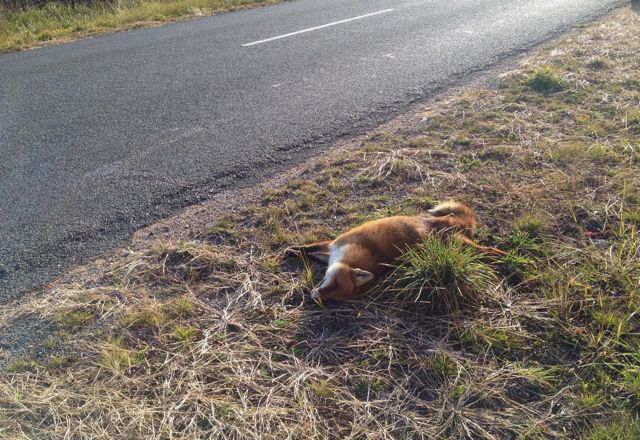Animals killed and injured on roads are a familiar sight in Australia. Within the contained security of a vehicle it is easy to speed past at over 100-kilometres an hour, scarcely giving a second thought to the lifeless bodies on the side of the road. Just hours earlier a wallaby may have been in search of fresh pick on the other side; a kookaburra may have been distracted while socializing; or a wombat may have been crossing the highway to locate water from a nearby river but met with sudden death.
The Kings Highway is a dangerous place. Many human deaths occur along this road, particularly where drivers are attempting to overtake other vehicles in their urgency to leave Canberra for a weekend down the South Coast of New South Wales, or to return back to the capital.[i] With such a large number of accidents along this stretch of highway, I have been concerned about my own safety, but it is not nearly as risky for me within the confines of a vehicle as it is for other beings that are caught out on the road. Leaving the vehicle to take photographs of the dead and maimed animals heightened my awareness of this risk, as I negotiated the oncoming vehicles.
This photo essay is a means of recognizing animals as individuals. Through the lens of a camera, I dwelled on the physicality of the being that had been living only a few hours before. Most of us do not have the opportunity to see ‘wild’ animals up close. I forced myself to look past the bluebottle flies, the blood and disgorged guts and to take note of the details, the soft fur or the rough sole of a well-worn foot.
I was inspired to take this series of photographs after co-organising and subsequently attending a workshop aimed at crossing between the arts, the sciences and the humanities, part of an annual event called ‘The Plumwood Gathering’. Two speakers who attended the workshop, artist John Reid and ecologist Daniel Ramp, acknowledged the death of animals on roads in different but corresponding ways. John Reid’s photographic interpretation featured in the previous issue of this journal.[ii] Daniel Ramp discussed how he has found that the death of marsupials on roads has consequences far beyond the site of impact. The social structure of a marsupial population changes as a result of the large number of deaths on roads. Individuals migrate to take up territory that has been left vacant, fundamentally changing the social dynamics of a population.[iii
Plumwood Mountain, the journal, is named after a real place. It consists of densely forested land on the brow of an escarpment with wonderful views down toward the South Coast. The land can only be accessed (by humans), by turning off the frantic Kings Highway and onto a minimal bush track. It is home to an interconnected web of plants and animals, including wombats, parrots, wallabies and the odd roaming fox. Val Plumwood formed strong bonds with two individual wombats up at Plumwood Mountain, both visiting her regularly for a number of years. She fully acknowledged that these wombats had individual characteristics and a distinct personality. [iv] I had the opportunity to meet one of these wombats, Victor. When I stopped to acknowledge a wombat lying dead on the road, Victor would come to mind and I wondered about the personality of the individual whose life had been cut short. At least places like Plumwood Mountain are refuges for some of these unique individuals and it is a place that can nurture life, rather than constantly and needlessly taking life away.























